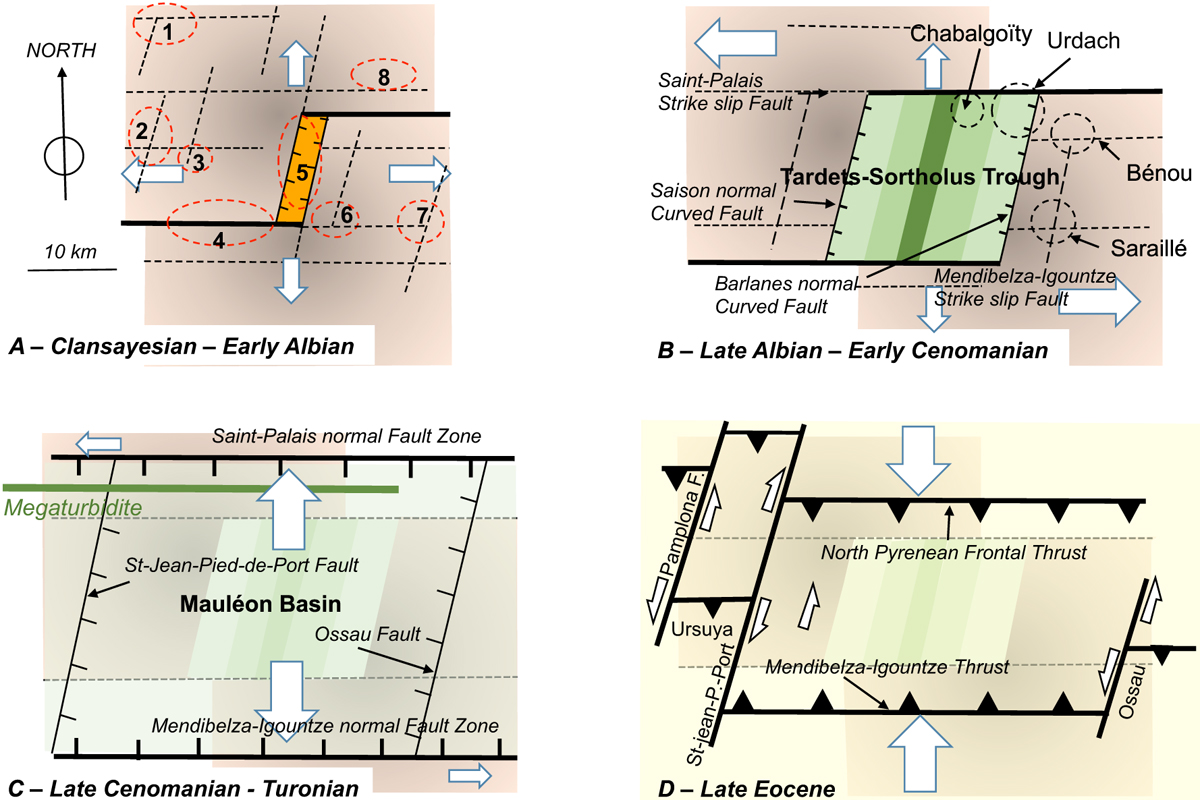Fig. 6

Download original image
Geodynamic evolution steps of the Mauléon Basin. A: Clansayesian (Uppermost Aptian) – Lower Albian: fracturing of the urgonian platform and major break down along the future Tardets Trough (orange color); starting of the West-Pyrenean diapiric process (1: Salies-de-Béarn; 2: Iholdy; 3: Arhansus; 4: Béloscare; 5: Saison complex; 6: Sarrance; 7: Lauriolle; 8: Lasseube). B : Upper Albian – Lower Cenomanian: creation of the Tardets-Sorholus Trough through W-E main counterclockwise strike slip inducing local extreme crust thinning and low N-S distension. Note the location of the transverse Saison and Barlanès listric faults and the present Chabalgoïty, Urdach, Bénou and Sarraillé outcropping mantle peridotites (black circles). C: Upper Cenomanian – Turonian: creation of the Mauléon Basin through widening of the Tardets-Sorholus Trough with dominant N-S extension and associated counterclockwise W-E strike slip weak motion. The sedimentary area increases laterally, both westward, beyond the Saint-Jean-Pied-de-Port fault to the Saint-Jean-de-Luz Basin and eastward, beyond the Ossau fault zone, to the eastern Bearn Basin. Note the development of the Turono-Coniacian Osquich Pass megaturbidite westward of the old Barlanès fault zone. D: Upper Eocene: Development through N-S compression of the pyrenean structures within the Mauléon Basin. The old Upper Cretaceous normal faults are reworked into E-W thrust faults (south verging in the southern Mendibelza-Igountze massifs and north verging in the northern North Pyrenean Frontal Thrust) and the old SW-NE transverse faults into dextral or anticlockwise strike slip faults. Note the strong northward offsetting of the Baygoura-Ursuya Massif along the transverse Pamplona Fault Zone.
Current usage metrics show cumulative count of Article Views (full-text article views including HTML views, PDF and ePub downloads, according to the available data) and Abstracts Views on Vision4Press platform.
Data correspond to usage on the plateform after 2015. The current usage metrics is available 48-96 hours after online publication and is updated daily on week days.
Initial download of the metrics may take a while.




